Exploring the Musical Depth of Madeleine Peyroux
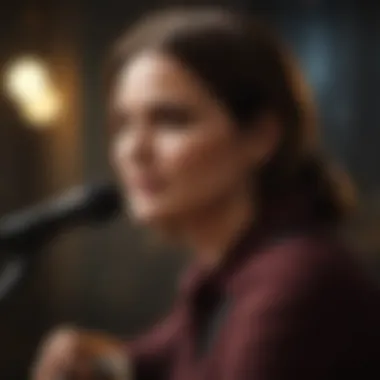

Intro
Madeleine Peyroux has carved a niche in the modern music scene through her unique blend of jazz, blues, and folk. With a hauntingly sweet voice and soulful interpretations, she captivates listeners. This article ventures into a thorough analysis of her work, revealing the intricacies of her musical journey.
Artist Profile
Biography and Background
Madeleine Peyroux was born in 1974 in Athens, Georgia. She spent her childhood in New York City and later moved to Paris, where her career began to blossom. Peyroux initially drew inspiration from legendary artists such as Billie Holiday and Ella Fitzgerald, shaping her vocal style. Her upbringing contributed to her exposure to various cultures, which deeply influenced her music.
Major Influences and Inspirations
Throughout her career, Peyroux has highlighted several influences:
- Jazz Vocalists: As mentioned, artists like Billie Holiday have left a permanent mark on her style.
- Blues Roots: The deep emotional expression found in blues is apparent in many of her songs.
- Folk Traditions: Peyroux’s ability to weave storytelling into her music connects her to folk traditions.
These influences not only define her sound but also contribute to the thematic richness of her songs.
Song Analysis
Theme and Lyrics Breakdown
Madeleine Peyroux’s lyrics often explore complex themes such as love, loss, and resilience. Her songs delve into emotional landscapes that are both personal and universal. For instance, in her popular track "Dance Me to the End of Love," she explores the intertwining of love and mortality. Key themes include:
- Love and Longing: The desire for connection resonates throughout her discography.
- Heartache: Many songs reflect on the pain of lost relationships.
- Resilience: A sense of enduring hope surfaces in her narratives.
Instrumentation and Composition
Musically, Peyroux’s compositions feature a mix of jazz standards and original works. She often collaborates with talented musicians, resulting in intricate arrangements. Instruments that frequently appear in her music include:
- Guitar: Provides a warm, inviting texture.
- Piano: Adds depth and complexity to her sound.
- Bass and Drums: Establish a rhythmic foundation, enhancing the emotional pull of her music.
A significant aspect of Peyroux’s artistry is her ability to convey emotions through both lyrics and instrumentation, creating a profound connection with her audience.
"Music is the shorthand of emotion." – Leo Tolstoy
This quote encapsulates Peyroux’s artistic ethos, emphasizing her innate ability to express complex feelings through her songs.
Closure
In summary, Madeleine Peyroux's music stands as a testament to her artistry and ability to touch hearts. Through studying her catalog, one gains insight into her influences, lyrical depth, and musical composition. This exploration reveals not only her contributions to contemporary music but also her place within the wider historical context. Her work continues to resonate with music enthusiasts and scholars alike.
Prologue to Madeleine Peyroux
Madeleine Peyroux is a distinctive voice in contemporary music. Her blend of jazz, blues, and folk elements has carved a unique space in the music scene. This section introduces her journey and significance in the industry. Understanding Peyroux's background reveals the layers of influence and artistry within her work.
Peyroux emerged in the 1990s, quickly gaining recognition for her emotive singing style and captivating interpretations of classic songs. One of her notable traits is her ability to infuse personal experiences into her music while drawing from timeless themes of love and longing.
The exploration of her discography reveals not just her talents, but the evolution of her sound over the years. Her early influences, including Billie Holiday and Ella Fitzgerald, shaped her unique vocal style. These influences are crucial for comprehending her artistry and how it resonates with diverse audiences.
Moreover, Peyroux's contribution to the modern music landscape cannot be overstated. She has inspired a new generation of musicians while maintaining connections to jazz traditions. This introduction aims to shed light on her artistry, setting the stage for the deeper analysis that follows in subsequent sections.
Musical Background
Understanding Madeleine Peyroux's musical background is crucial for appreciating her artistry. Her evolution as an artist is intertwined with diverse influences and the rich traditions of music that have shaped her. This section examines her early experiences, the pivotal role of jazz, and how her integration of various genres contributes to her distinctive sound.
Early Influences
Madeleine Peyroux's formative years were marked by a variety of musical influences. Growing up in a multicultural environment, she was exposed to an array of sounds, from folk to blues. These early experiences provided a foundation for her later work. Her time in France also introduced her to classic French songs and the poignant lyricism that characterizes them.
Key points about these influences include:
- Exposure to different musical styles at a young age.
- The impact of her multicultural upbringing on her songwriting.
- The influence of iconic artists, such as Billie Holiday and Bessie Smith, who shaped her vocal approach.
Through these early influences, Peyroux developed a unique perspective on music that blends various traditions and styles.
The Role of Jazz
Jazz plays a significant role in Peyroux's music and identity as an artist. It is not just a genre but a lens through which she interprets the world around her. Her smooth voice and ability to improvise reflect the essence of jazz. Moreover, her performances often exhibit the spontaneity and freedom typical of jazz music.
Some notable aspects include:
- Her use of vocal phrasing similar to jazz instrumentalists.
- The way she incorporates jazz standards into her repertoire, giving them new life.
- The impact of jazz on her Live performances, showcasing her ability to connect with her audience on a deeper level.
Through her connection to jazz, Peyroux creates an immersive experience that resonates with listeners.
Integration of Genres
Peyroux's work highlights her talent in blending genres. While her foundation lies in jazz, she pulls elements from blues, folk, and pop to create a sound that is uniquely her own. This integration allows her to reach a broader audience and explore a range of themes in her music.
- The blending of folk melodies with jazz structures leads to innovative compositions.
- Her exploration of themes from blues adds an emotional depth to her lyrics.
- Collaborations with artists from various backgrounds enhance her versatility.
Ultimately, this integration of genres not only showcases her artistic range but also engages listeners from different musical preferences.
Notable Albums
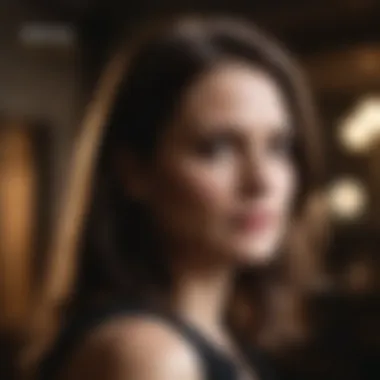

Madeleine Peyroux's discography is a testament to her evolution as an artist. Each album marks significant milestones in her career, revealing her artistic growth and the deepening complexity of her music. The themes explored through her albums resonate well with listeners, highlighting her unique approach to songwriting and performance. In this section, we will examine her notable albums, focusing on the ways these works contribute to her sound, identity, and the broader musical landscape.
Dreamland
Released in 1996, Dreamland showcases Peyroux's early promise as an artist. The album is characterized by its blend of jazz, blues, and folk influences, creating a unique sonic experience. This debut album features a collection of covers, including Walkin’ After Midnight originally by Patsy Cline. Peyroux's interpretation brings a fresh perspective, combining her soulful voice with thoughtful rhythms.
The charm of Dreamland lies in its intimate feel, giving listeners a glimpse into her world. It reflects an artist in the early stages of her development, where each track unveils layers of personality and emotion. Critics praised the album for its smooth interaction of styles and the warmth of Peyroux’s vocals. It set a solid foundation for her career, presenting her as a significant emerging talent in the music scene.
Careless Love
With the release of Careless Love in 2004, Peyroux reached new heights in her artistic journey. This album features a mix of original songs and covers, with a notable rendition of Don't Know Why, originally by Norah Jones. The artful arrangement of tunes emphasizes Peyroux's unique vocal style and emotional depth.
The album explores themes of longing and heartache, showcased in tracks like You’re Gonna Make Me Lonesome When You Go. Its combination of jazz, Americana, and blues demonstrates her ability to cross genres while maintaining a distinct sound. The remarkable clarity of her vocals paired with the intricate instrumentation captivates the listener. Careless Love solidified her presence in the music industry, earning critical acclaim and commercial success, which paved the way for her future endeavors.
Half the Perfect World
In 2006, Peyroux released Half the Perfect World, further establishing her reputation as an artist. This album is notable for its collaboration with renowned musicians, including Larry Klein, who helped craft its sophisticated sound. The tracks delve into personal themes of love, loss, and reflection, often drawing inspiration from her own experiences.
Songs like The Summer Wind resonate with deep emotional contexts, while Falling in Love showcases her impressive vocal range and expressive delivery. The album is enriched by lush arrangements and introspective lyrics, inviting listeners into an evocative soundscape. Half the Perfect World reflects both maturity and artistic confidence, marking a significant chapter in Peyroux's career.
“Madeleine Peyroux's albums are a journey through sound and emotion, rediscovering the essence of jazz and blues while establishing her individuality in the music world.”
Overall, Peyroux's notable albums demonstrate her growth as a musician. Each release builds on the last, allowing listeners to appreciate her artistic evolution. From Dreamland to Half the Perfect World, her music continues to inspire and connect with audiences worldwide.
Signature Songs and Their Themes
Signature songs play a pivotal role in defining the essence of an artist's musical identity. For Madeleine Peyroux, her signature works not only showcase her vocal ability but also encapsulate the thematic concerns that permeate her artistry. Through these songs, listeners gain insight into her personal journey, her cultural influences, and the emotional depth that her music conveys. The exploration of Peyroux's signature songs reveals how she intertwines elements of love, longing, and memory, resonating with a wide audience.
Dance Me to the End of Love
"Dance Me to the End of Love" is a mesmerizing rendition that highlights Peyroux's interpretative skills. Originally written by Leonard Cohen, Peyroux's version infuses the song with an intimate, almost haunting quality. The lyrics explore themes of love and mortality, creating a tension between beauty and sadness. By choosing to cover this song, Peyroux not only pays homage to Cohen but also adds her personal touch, transforming it into a dialogue about the human condition. The use of rhythm and tempo in her rendition enhances the narrative, making it a staple in her live performances.
Don't Know Why
In the song "Don't Know Why," Peyroux delves into the complexities of longing and introspection. This track, popularized by Norah Jones but uniquely interpreted by Peyroux, expresses vulnerability and uncertainty. The simplicity of the musical arrangement allows her voice to shine, emphasizing the emotional weight of the lyrics. The song captures a moment of uncertainty in romantic relationships, presenting an honest reflection on the desire for clarity. This theme of confusion and yearning is a recurrent element in Peyroux's repertoire, connecting deeply with her listeners.
J'ai Deux Amours
"J'ai Deux Amours" stands as a testament to Madeleine Peyroux's ability to blend cultural influences in her music. This song, which translates to "I Have Two Loves," reflects her connection to both American and French musical traditions. The lyrics convey the struggle of divided affections, evoking a sense of nostalgia and longing for both a place and a person. The jazzy undertones paired with Peyroux's sultry vocals create a rich auditory experience that transports the listener into the emotions conveyed in the song. This duality not only showcases her versatility as an artist but also speaks to the broader theme of belonging in her work.
Lyrical Analysis
Lyrical analysis serves as a cornerstone in the understanding of Madeleine Peyroux's music. Her songwriting is not merely a vehicle for melody; it encapsulates intricate narratives, emotional depth, and cultural reflections. Analyzing her lyrics allows listeners to uncover the layers of meaning embedded within each song, revealing how Peyroux harnesses language to paint vivid imagery and convey profound feelings.
Storytelling in Songwriting
Peyroux's songs frequently exhibit a strong narrative quality. Her songwriting draws heavily on personal experiences, as well as universal themes, tying individual stories to collective consciousness. Songs such as "Dance Me to the End of Love" illustrate this well, referencing not only love but also the passage of time and the inevitability of mortality.
"Every song is a story waiting to be told, a journey waiting to be taken."
Her ability to craft these stories engages listeners, making them not just passive consumers but active participants in the journey. Through a combination of vivid details and relatable emotions, she invites the audience to connect with her narratives on a personal level.
Emotional Resonance
The emotional weight of Peyroux's lyrics is another significant aspect to consider. Each phrase she chooses resonates with an authenticity that strikes a chord with listeners. The exploration of pain, joy, and longing in her songs creates a profound emotional landscape.
For example, in "Don't Know Why," the expression of confusion and vulnerability encapsulates the essence of heartbreak, allowing the listener to empathize with the singer's emotional state. The subtleties in her phrasing can evoke nostalgia, sorrow, or comfort, illustrating her mastery in tapping into the listener's feelings. Evaluating the emotional resonance of her lyrics is vital in appreciating how she connects with her audience at an intimate level.
Cultural References
Peyroux often weaves cultural references into her lyrics, enriching the listening experience and providing context. From allusions to historical personalties to nods at literary works, her songs become a tapestry of influences that reflect a broader cultural narrative.
Such references help ground her music within a specific cultural framework. They also invite listeners to explore those connections. For instance, her cover of "J'ai Deux Amours" not only pays homage to the song's origins but also opens a dialogue about identity and belonging, as it resonates with common experiences faced by many. Examining cultural references allows listeners to better understand Peyroux’s substantive commentary on societal issues through her art.
In summary, the lyrical analysis of Madeleine Peyroux's music reveals the intricacies of storytelling, emotional depth, and cultural richness within her songs. These components are essential for grasping her artistic contributions, offering insights that resonate well beyond the surface of her melodies.
Vocal Technique
Vocal technique plays a central role in understanding the artistry of Madeleine Peyroux. It is not merely about how she sings, but also how her approach shapes the emotional and aesthetic quality of her music. By examining her vocal choices, we can better appreciate the nuances of her sound and the depth of her artistry.
Style and Delivery
Peyroux's style is often characterized as subtle yet impactful. Her delivery is an essential part of her performance, as it conveys emotion and meaning with precision. She often uses a relaxed phrasing that allows her voice to breathe and resonate within the context of the song. This technique gives her a unique time signature that draws listeners into the moment. For example, her dynamic shifts keep her audience engaged while enhancing the underlying emotional layers of the lyrics.
Peyroux’s use of phrasing relies on the integration of both jazz and blues influences. She often emphasizes certain notes and stretches phrases, creating a conversational quality. This delivery technique makes her songs feel intimate, as if she personally connects with each listener.
Influence of Blues and Jazz
The influence of blues and jazz on Peyroux's vocal technique cannot be overstated. Both genres have shaped her distinct sound, which marries elements of improvisation with structured melodies. Jazz allows her the freedom to explore notes and play with tempo. As a result, she infuses her songs with a sense of spontaneity that captures the essence of live performances.
Peyroux's appreciation for blues adds texture to her voice. Blues informs her use of melisma and vocal runs, allowing her to express sorrow, joy, and nostalgia. These techniques enable her to tell complex stories through music. She transforms simple lines into profound emotional experiences.
The harmonics of her voice often embrace the dissonance common in jazz, allowing for a rich tonal quality. She skillfully blends this with a bluesy edge that resonates with many listeners.
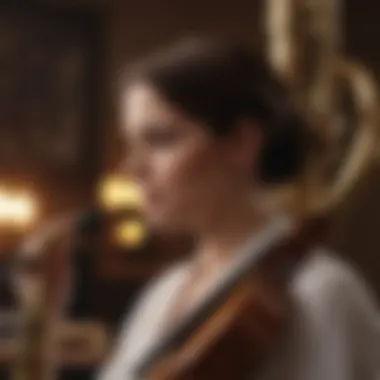
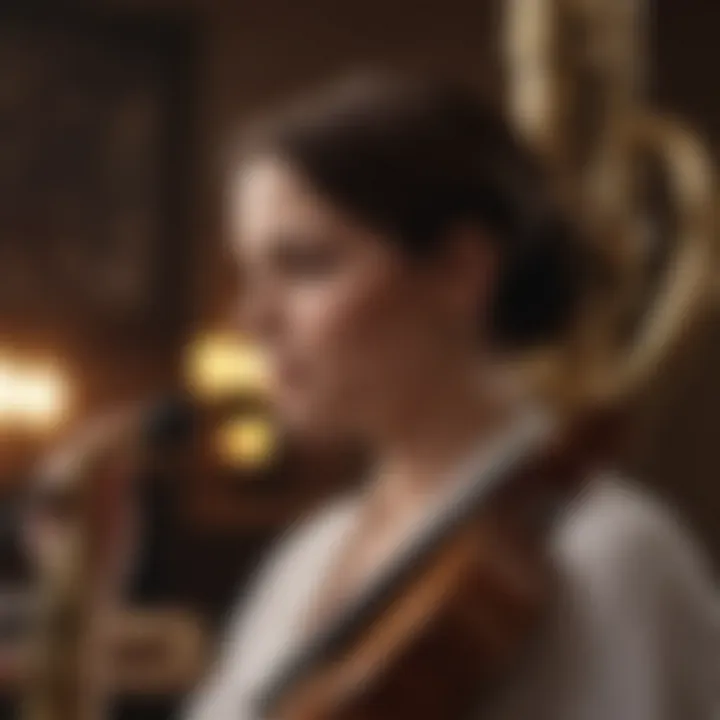
Through these influences, Peyroux establishes a vocal identity that is uniquely her own, enhancing her interpretative skills and musical authority. This not only makes her performances memorable but also solidifies her position in contemporary music.
Collaborations and Influences
Collaborative Projects
Madeleine Peyroux's career has been marked by numerous collaborations that enrich her musical output. Working with other artists often results in a blending of styles, enhancing her unique sound. For instance, her work with legendary guitarist Bill Frisell has introduced subtle nuances to her acoustic arrangements. Their partnership showcases a melding of jazz and folk sensibilities, creating a fresh listening experience.
Peyroux's collaborative efforts are not limited to studio recordings. Live performances also demonstrate this synergy. For instance, during her concerts, she frequently shares the stage with artists across various genres, adding depth to her interpretations of popular standards. Collaborations such as these allow her to explore new artistic territories while remaining rooted in her own distinctive style.
Furthermore, her partnership with artists like Larry Klein, who has produced some of her albums, is significant. Klein's influence can be seen in the arrangements and overall feel of Peyroux's music. Having a collaborator who understands her artistic vision helps to craft a sound that is both innovative and recognizable.
Ultimately, Peyroux's collaborative projects are essential in illustrating how artistic interactions can lead to refined creativity and complex musical expressions.
Impact of Peers
The influence of peers in Madeleine Peyroux's journey cannot be understated. In the world of music, artists often draw inspiration from those around them. Within the jazz and blues circles, Peyroux has found herself among likeminded individuals who challenge and motivate her.
One notable aspect is her connection with emerging artists. Many of her peers are also influenced by traditional jazz, creating a sense of camaraderie and mutual respect. This network has fostered a creative environment where ideas are exchanged freely.
Peyroux's artistic evolution is partly a reflection of these relationships. Listening to contemporary musicians allows her to expand her repertoire while staying true to her roots. Artists like Norah Jones and Diana Krall have become significant figures in the music world, bridging the gap between jazz and popular music. Their success serves as both inspiration and evidence of what is possible within the industry.
Additionally, Peyroux's ability to adapt and incorporate various elements from these peers enables her music to remain relevant. The ongoing dialogue between established musicians and newcomers encourages an organic growth in her sound, ultimately benefitting both her artistry and her audience.
In summary, the impact of peers in Madeleine Peyroux's career enriches her music, opening avenues for exploration and growth. Through collaborations and shared experiences, artists evolve, resulting in a deeper connection with their own music and the broader musical landscape.
Live Performances
Live performances are vital in understanding a musician's artistry. For Madeleine Peyroux, these moments reveal her connection with the audience and showcase her musical evolution. Concerts are not just events; they are experiences where her songs come alive, offering insights that studio recordings may not capture.
During her performances, Peyroux displays a unique ability to engage listeners. Her interpretations of songs often vary from album versions, bringing a fresh perspective. These variations may include changes in tempo, vocal inflections, or even improvised elements. Such spontaneity enriches the experience for the audience, making each concert distinctive.
Proximity also plays a significant role in live performances. The intimate setting allows her to share personal stories behind songs. This form of storytelling fosters a deeper connection, emphasizing the emotional weight of her music. Audience members often leave with a sense of personal belonging, as if they shared a moment of vulnerability with the artist.
Additionally, live performances allow for the expression of community. Fans come together, united by their appreciation of Peyroux's work. This aspect can be observed during her concerts, where collective excitement enhances the performance.
"A good concert is not just about the music; it’s about creating an experience that resonates long after the last note."
In essence, live performances solidify Madeleine Peyroux's place in modern music. They celebrate her interpretative skill and ability to evoke emotion. This connection transforms her concerts into memorable events that leave a lasting impact, not only on attendees but also on her artistry as a whole.
Concert Experiences
Peyroux's concert experiences are characterized by their intimacy and emotional depth. The ambiance in venues where she performs often invites participation and reflection. Attendees frequently report a profound connection to the music as they witness her command over the stage. Through her expressive delivery, she invites her audience into her world, making each performance feel personal. The emotions expressed in her songs resonate with listeners, creating an environment for communal experience.
Specific venues enhance these experiences. Small clubs or theaters provide the proximity needed to truly appreciate her vocal nuance and musicianship. Memorable performances often occur in settings that reinforce this closeness, emphasizing the uniqueness of her live renditions.
Festival Appearances
Peyroux’s appearances at music festivals showcase her versatility in front of larger crowds. Unlike intimate concerts, festivals present a different set of challenges and opportunities. While the audience may be less familiar with her work, the festival atmosphere encourages exploration of various musical styles.
During festivals, Peyroux has the chance to perform alongside a diverse range of artists. This environment fosters collaboration, allows her to adapt to different audience dynamics, and enhances her ability to draw listeners in. These performances can introduce her music to new fans, extending her reach and influence.
Moreover, festival performances often highlight classic hits while also allowing for newer material. This blend not only satisfies existing fans but also piques the interest of festival-goers encountering her music for the first time.
Reception and Impact
The reception and impact of Madeleine Peyroux's music offer critical insights into her significance within the music industry. Evaluating how audiences respond to her work, as well as how her contributions resonate with both listeners and critics, provides a clear perspective on her status as an influential artist. This section uncovers essential elements, benefits, and considerations regarding her reception and the resulting impact on the evolving landscape of music.
Critical Acclaim
Madeleine Peyroux has received extensive critical acclaim throughout her career. Her unique blend of jazz, blues, and folk elements distinguishes her within a crowded field. Critics often praise her vocal delivery and poignant lyrics. For instance, her rendition of Leonard Cohen's "Dance Me to the End of Love" demonstrates her ability to infuse emotional depth into covers. The originality she brings to both interpretations and original works has not gone unnoticed.
Reviews from major music outlets such as Rolling Stone and The New York Times often highlight her distinct voice and storytelling ability. Such accolades have not only established her as a leading figure in contemporary jazz but have also contributed to a resurgence of interest in the genre itself. With each album release, she draws critical attention, showcasing her growth as an artist while maintaining authenticity in her sound.
"Peyroux crafts songs that linger in the mind long after the final note has faded."
This quote echoes the sentiments of many who have experienced her music. The combination of her captivating voice and insightful lyrics fosters a lasting impact, challenging listeners to engage with her art on a deeper level.
Influence on Emerging Artists
The influence of Madeleine Peyroux extends beyond her own recordings. Many emerging musicians cite her as a significant source of inspiration. She serves as a role model for young artists looking to merge different musical styles. Her fearless approach to genre blending encourages others to explore creativity beyond traditional boundaries.
Several musicians in the jazz and indie scenes openly acknowledge how Peyroux's vulnerability in songwriting resonates with their own creative journeys. In a music landscape where authenticity is key, her example offers a roadmap for others. Emerging artists often emulate her storytelling finesse and emotive vocal techniques, striving to achieve a similar depth in their work.
In summary, the reception and impact of Madeleine Peyroux illustrate her importance as an artist. Her critical acclaim affirms her place in contemporary music, while her influence on upcoming musicians underscores her role in shaping the future of the genres she represents.
Cinematic Contributions
Madeleine Peyroux's music extends beyond the realm of audio experiences, finding a sophisticated presence in the world of cinema. This section highlights the significance of her contributions to film through her evocative songs and collaborations. The intersection of her musicality with cinematic storytelling enriches both art forms, allowing her work to resonate on multiple levels.
Songs in Film
The inclusion of Madeleine Peyroux's songs in films adds a layer of emotional depth to cinematic narratives. Her unique vocal style and the intricate melodies elevate scenes, often accentuating themes of love, loss, and longing. For instance, tracks like "Dance Me to the End of Love" evoke a sense of romantic nostalgia, fitting seamlessly into films that explore complex human relationships.
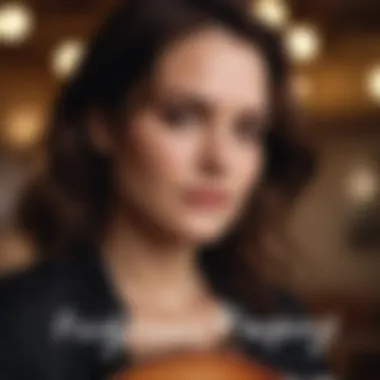

In several movies, Peyroux's songs serve as a narrative vehicle. They can embody a character's feelings or reflect broader story arcs. This synergy demonstrates her ability to not only complement visual storytelling but also enhance the audience's engagement with the film's emotional core.
Additionally, the flexibility of her music allows it to traverse various genres. Whether used in romantic dramas or introspective documentaries, Peyroux's contributions adapt to the thematic necessities of each film. This adaptability showcases her artistry and the wide-ranging appeal of her catalog.
Soundtrack Collaborations
Peyroux's work in soundtracks demonstrates her collaborative spirit and ability to work alongside filmmakers. Her songs can be found in notable film soundtracks, contributing significantly to the overall tone and atmosphere. Collaborations with producers and directors reflect a commitment to creating tailored musical experiences that align with specific cinematic visions.
Through these collaborations, she has successfully bridged the gap between music and film, allowing her artistic voice to shape the viewer's experience. The careful curation of her songs in soundtracks showcases her impact on contemporary film music.
"Music is the shorthand of emotion." This quote encapsulates Peyroux's ability to convey complex feelings through her songs, enhancing the cinematic landscape.
Themes of Love and Longing
The themes of love and longing serve as central motifs in the work of Madeleine Peyroux. They resonate deeply within her songs, drawing listeners into an exploration of personal and emotional landscapes. Peyroux's ability to convey complex feelings regarding relationships makes her music relatable and profound. This section aims to delve into how these themes manifest in her lyrics and melodies, providing insight into their significance in her overall artistic narrative.
Interpersonal Relationships
In examining Peyroux's songs, interpersonal relationships emerge as a primary focus. The complexities of love, be it romantic or platonic, are often at the forefront. For example, in "Dance Me to the End of Love," the lyrics evoke a sense of yearning and devotion, chasing the elusive moments shared between lovers. The song captures not just the joy but also the pain associated with deep connections.
Peyroux skillfully navigates various relational dynamics, ranging from the exhilaration of new love to the sorrow of separation. Her storytelling ability allows listeners to see reflections of their own experiences in her music, which fosters a deep emotional connection. Songs like "Don't Know Why" touch on uncertainty and vulnerability in relationships, illustrating how love can frequently lead to both joy and heartache.
- Emotional Range: Peyroux explores the rich spectrum of emotions tied to love—passion, betrayal, nostalgia, and reconciliation.
- Relatability: Her lyrics reflect universal experiences, making her songs resonate with a wide audience.
Nostalgia and Memory
Nostalgia plays a critical role in Peyroux's exploration of longing. Through her music, she delves into the sweetness of memories that shape one's emotional experiences. In tracks like "J'ai Deux Amours," there exists a nostalgic longing for home and loved ones, which resonates particularly with those who have experienced transience in life. The wistful melodies and intimate lyrics create a sonic environment where memory can be felt almost tangibly.
Peyroux's ability to articulate nostalgia is enhanced by her vocal delivery, which carries a sense of reflective melancholy. This allows listeners to not only remember their own pasts but also feel the weight of those memories. The integration of jazz influences invokes a timeless quality that feels both old and new, enriching the listening experience.
- Memory as a Theme: Nostalgia is not merely a backdrop; it is a driving force in her songwriting.
- Connection to the Past: Her songs often draw listeners back to significant moments in their lives, inviting them to reflect on how those experiences influence their present.
"In music, nostalgia is a bridge between the present and the past, creating an emotional connection that transcends time."
Challenges and Growth
In the landscape of music, artists often encounter complex challenges that can define their careers. For Madeleine Peyroux, the journey has been marked by personal struggles and artistic evolution. Understanding these aspects is pivotal, as they reveal the resilience and adaptability that characterize her work. This section explores the struggles she faced and how they impacted her artistry, offering insights into her growth and persistence.
Personal Struggles
Madeleine Peyroux's life has not been without its hardships. Born in 1973, she experienced the duality of a rich cultural upbringing combined with personal strife. She grappled with the pressures of fame, mental health challenges, and the inevitable impacts of past decisions. Such experiences inform her lyrics, often steeped in themes of heartache and longing.
These personal struggles have a profound influence on her songwriting. Songs like "Don't Know Why" resonate with listeners not just through musical technique, but through the authentic emotions drawn from her life. She articulates feelings of vulnerability and resilience, creating a bridge between her inner turmoil and the listener’s experiences.
Artistic Evolution
Peyroux's artistic growth can be traced through her discography. Each album showcases a shift in her sound and lyrical depth. Initially, her style echoed the jazz influences she admired, but over time, she incorporated various genres, allowing her voice to evolve organically.
Her artistic evolution is characterized by:
- Diverse Influences: She draws from blues, folk, and pop. This blend enriches her music, making it multifaceted.
- Lyrical Maturity: Over time, her lyrics have become more introspective. The themes have shifted from mere reflections of love to deeper explorations of identity and resilience.
- Collaboration: Working with diverse artists has introduced new perspectives in her music. Collaborations with musicians like Jay Bellerose and others have added layers to her sound.
"Growth in art is often mirrored by personal development; for Peyroux, they are inseparable."
As Peyroux continues to navigate the challenges of her career, her evolution demonstrates not only her resolve but also a commitment to authenticity. Her ability to channel personal experiences into her music fosters a connection with audiences, and it ensures her relevance in the ever-changing musical landscape.
This ongoing journey reflects not only Peyroux’s adaptability but also serves as a testament to the potential for growth amidst adversity.
Future Projects
The future projects of an artist often indicate their evolving journey and ambitions. In the case of Madeleine Peyroux, her upcoming works are significant not only as a continuation of her musical legacy but also as a reflection of her artistic growth. Understanding Peyroux’s future directions allows fans and scholars to grasp the potential shifts in her sound, themes, and collaborations. By anticipating her new releases and artistic aspirations, one can appreciate the expected trajectory of her career.
Upcoming Releases
Madeleine Peyroux has hinted at several exciting upcoming releases that promise to showcase her vocal prowess and lyrical depth. While specific details are often closely guarded until formal announcements, her followers are aware that Peyroux tends to explore diverse influences in her new music. This can include a mix of original songs and covers of classics that resonate with her personal experiences and insights.
Recent interviews suggest that she is working on a project that may feature collaborations with various contemporary musicians. These partnerships could enrich her sound, introducing fresh elements while remaining true to her core principles of jazz and blues. The anticipation surrounding these upcoming releases often builds a sense of community among her listeners, as they eagerly await new material that continues to challenge and inspire.
Artistic Aspirations
As an artist, Madeleine Peyroux's aspirations extend beyond simply producing music. She aims to push boundaries, both musically and personally. In her future works, one can expect a blend of introspective themes that reflect her life experiences. This search for deeper meaning in her songs often leads her to explore complex emotions and social issues.
Moreover, Peyroux has expressed interest in delving into more experimental sounds. This exploration could lead to innovative approaches in her songwriting and arrangements, further expanding her already diverse catalog. As she navigates new artistic terrains, her commitment to authenticity and emotional truth remains a driving force.
"Music has the power to convey feelings and stories that sometimes words alone cannot express. I want to continue to share that through my work."
— Madeleine Peyroux
Finale
In this article, the conclusion serves as a vital section that encapsulates the journey through Madeleine Peyroux's music and contributions. It is essential to summarize the insights gained from her artistic expressions, lyrical depth, and the overall thematic elements presented in her songs.
The discussion throughout the article highlights various aspects of her work, such as the influence of jazz and blues, the emotional resonance of her lyrics, and the way she captures the complexities of love and identity. This conclusion not only reiterates these points but also emphasizes their significance in both a contemporary and historical context. It gives readers a clear understanding of how Peyroux has carved out a unique space in modern music.
By bringing together the diverse threads of her musical style, the conclusion allows readers to appreciate the artistry that defines Madeleine Peyroux. Her ability to weave personal stories and collective sentiments into her music stands out, offering a rich listening experience that resonates with many. Therefore, it becomes clear that the examination of her songs is not merely about entertainment but also about understanding the fabric of human emotion that she articulates so eloquently.
In summary, such a conclusion helps solidify the main themes discussed in the article. It invites reflection on how Madeleine Peyroux’s body of work contributes to the cultural landscape of music today and encourages aspiring musicians and enthusiasts to delve deeper into her catalog.
"Through her songs, Peyroux invites listeners to explore the intricacies of life, love, and longing, making her work profoundly impactful."
By affirming the relevance of her contributions, the conclusion assures readers that Peyroux’s music matters, echoing back to every poignant detail discussed earlier in the article.







